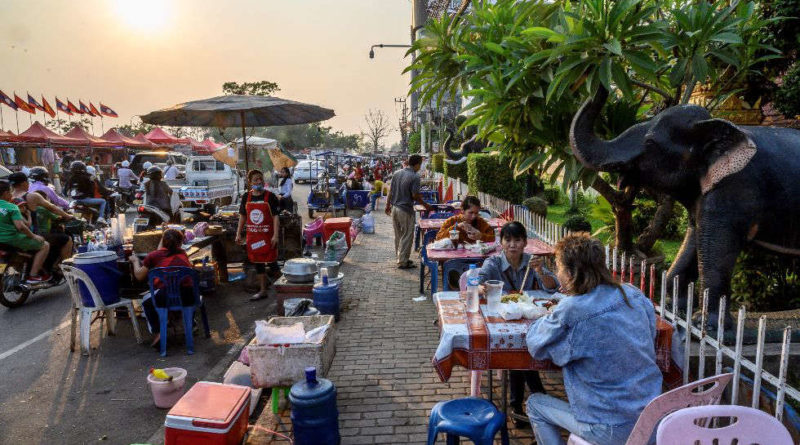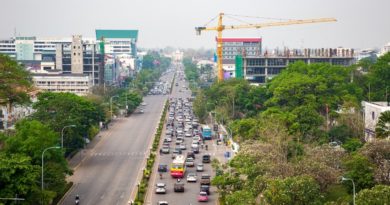US Has Opportunity To Establish Stronger Economic Ties With Laos
Source: MSN.com
Historically, the United States has not had strong economic or diplomatic ties with Laos. Being the smallest economy among the Association of Southeast Asia Nations (ASEAN) and ruled by the communist Lao People’s Revolutionary Party (Lao PRP), Laos is largely considered a Chinese satellite state.
However, Laos has been trying to attract foreign investment from other sources. The United States has an opportunity to reset its relationship with Laos and establish a future-oriented partnership based on economic development to offer a complement to Chinese influence.
The U.S.-Laos relation dates back to the mid 1950s when the country achieved independence from France and founded the Kingdom of Laos. The United States supported the monarchy through the 1975 Lao Civil War, in which the communist party won, and established the Laos People’s Democratic Republic (PDR). Unlike with their communist neighbors in Cambodia and Vietnam, the United States never fully severed diplomatic ties, but did downgrade its presence, decreasing the amount of staff in country and changing the head official from an ambassador to Chargé d’Affaires. Full diplomatic presence would not be restored until the fall of the Soviet Union in 1991 when Laos PDR sought to move towards a market economy.
The biggest thorn in the side of U.S.-Laos relations is the historic legacy of the Vietnam War. The Ho Chi Minh trail (1959-1975), which provided supplies to North Vietnamese fighters during the Vietnam War, ran primarily through Laos and was a heavy target for U.S. bombing. An estimated 2 million tons of munitions were dropped on Laos during the war, making it the most bombed country per capita in the world. Many of those munitions never went off and remained as unexploded ordinances (UXO). These UXOs are responsible for the killing and wounding of thousands of Laotians since 1975.
As a continued effort to repair the legacy of war, in 2016 the Obama administration announced a three-year $90 million package for UXO removal. For context, the United States had spent $100 million in the prior 20 years. At the same time, the Obama administration committed to increasing U.S. presence in Laos. Senior U.S. government representatives started making official trips to the country. In 2012, Hillary Clinton became the first Secretary of State to visit Laos since 1955, which would then be followed up by Secretary of State John Kerry visiting twice in 2016. Most importantly, in 2016 President Obama became the first U.S. president to ever visit Laos. During his visit, President Obama spoke of the U.S. moral obligation for humanitarian aid to Laos due to the munitions left from the Vietnam War. He also highlighted Laos as a greater focus of the United States on the Asia Pacific region and the actions of China within it.
With a population of just under 7.5 million people, the country is youthful. The median age is 24 years old, and fewer than 10 percent of citizens are over 55. This means that the legacy of the Vietnam War predates most citizens’ memory. On the other hand, China has been making significant investments in infrastructure and other industries. China is the most influential country currently in Laos, being their second largest trading partner, behind Thailand, and their largest foreign investor.
While foreign aid from the U.S., our allies, and the World Bank totals just over $630 million, China is spending billions on infrastructure ranging from roads to dams. The largest project is a $6 billion railway which would stretch from the capital of Laos, Vientiane, to the southern border of China set to be complete by the end of 2021. This would be Laos’s first direct rail connection from Laos to China, and it is also the most expensive infrastructure project in the country’s history. However, its commercial viability is uncertain. This and Chinese-funded dams have left Laos with a large debt burden. In contrast to this approach, the United States Trade and Development Agency (USTDA is currently analyzing the viability of a 20-megawatt solar project in Laos, which would be the first of its kind within the country.
If the United States wants to increase its engagement in Laos, it has to focus its relationship on economic development. For example, in 2009 the U.S. set up the Lower Mekong Initiative (LMI), followed by the U.S.-Lao comprehensive partnership in 2016. The LMI is a program among several countries including the United States, Laos, Myanmar, Thailand, Cambodia, and Vietnam. The LMI program aimed to increase economic, people-to-people, health, and energy engagement but also assert U.S. influence within the region. The U.S.-Laos comprehensive partnership was accorded and paired with a trade and investment framework agreement from the same year. As a result, trade between the two countries has grown threefold from 2013 to 2019.
On the aid front, the first staff from the United States Agency for International Development (USAID) arrived in Laos in 2011 after a 25-year hiatus. USAID’s current work in Laos consists of improving health and nutrition for women and children, policy and trade promotion, and forest and ecosystem management. On the health front, the United States is competing with China in the distribution of COVID vaccines. As of Friday, Laos had reported 7,305 confirmed cases of COVID-19 and only 7 deaths, but the situation was getting worse through the end of July. However, less than 15 percent of the population have at least a single dose of any COVID-19 vaccine. The United States donated 1 million doses of the Johnson & Johnson vaccine through COVAX, which arrived on July 16, in addition to the 100 thousand Pfizer and 130 thousand AstraZeneca vaccines from prior donations. China, as of June 14, had delivered about 1.4 million doses of the Sinopharm vaccines.
Given these developments, the United States has an opportunity to broaden its diplomatic engagement and establish stronger economic ties in a country which is strongly under the Chinese purview.
Through its bilateral agencies and multilateral partners, the United States can help Laos improve its business climate and spur private investment into the nation. This also includes programs that equip youth with the skills of tomorrow in order to fulfill their aspirations for quality education and better economic opportunities. The Biden administration has a chance to forge a new economic partnership with Laos, once an overlooked nation, strengthening its sphere of influence in the Indo-Pacific, a strategic region for the United States.
Daniel F. Runde is a senior vice president and William A. Schreyer chair in Global Analysis at the Center for Strategic and International Studies. He previously worked for the U.S. Agency for International Development, the World Bank Group, and in investment banking, with experience in Africa, Asia, Europe, Latin America, and the Middle East.






